Abstract
1. Contractile repriming has been studied in voltage-clamped snake twitch muscle fibres. Maintained depolarization causes a contractile response which inactivates after a few seconds. Repolarization of the fibre can restore its ability to contract to a subsequent depolarization. This restoration, or repriming, depends on the magnitude and the duration of the repolarization. At -100 mV the minimal period of repolarization which restores contractile response is 0·38 sec. The time for recovery to half maximal tension is about 0·68 sec, and restoration is complete at about 4 sec.
2. Repolarization to smaller levels of membrane potential results in a slower rate of repriming. For example, at -60 mV the mean minimal time for repriming was 2·89 sec, and nearly 17 sec of repolarization was required for full restoration of contractile response.
3. The rate of repriming was not influenced by lowering the external sodium concentration.
4. Repriming could be produced by repetitive, brief pulses of repolarization.
5. The restoration of contractile response and of outward inactivating current showed similar time courses.
Full text
PDF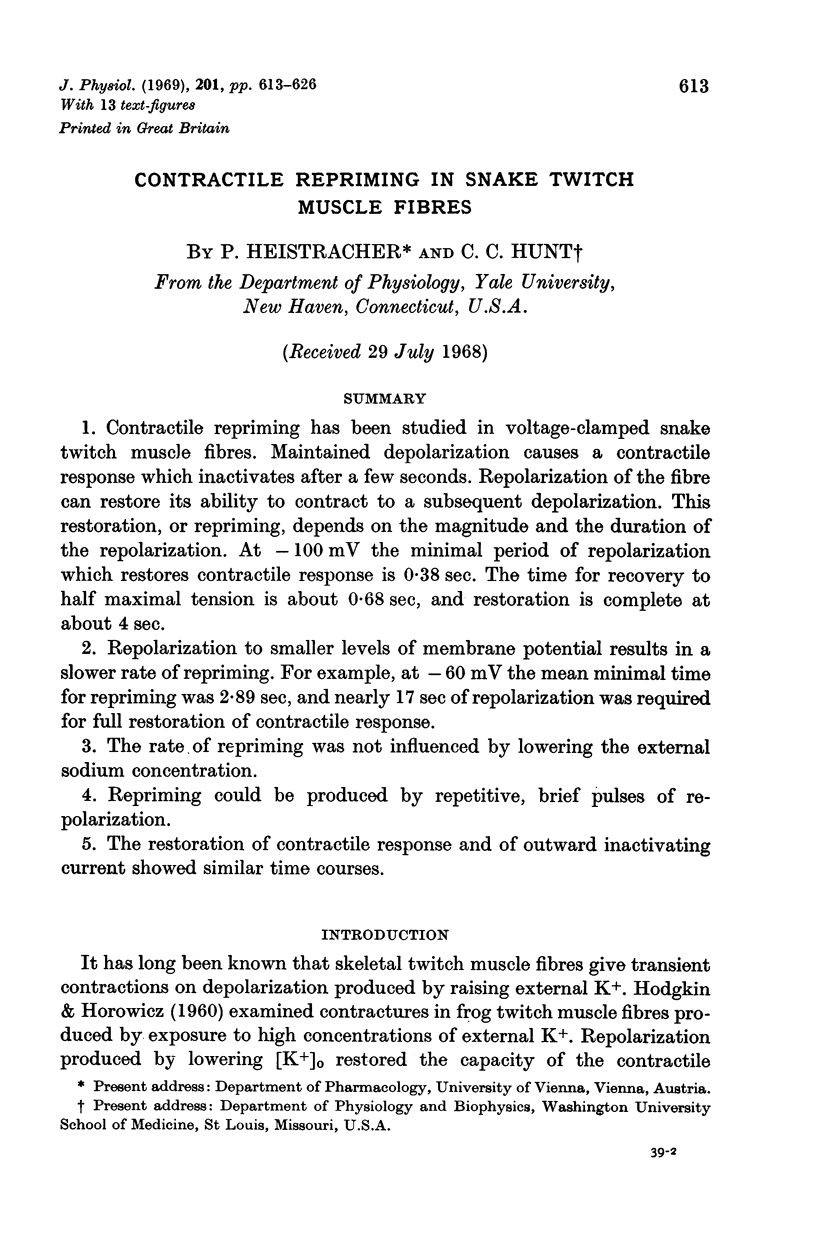
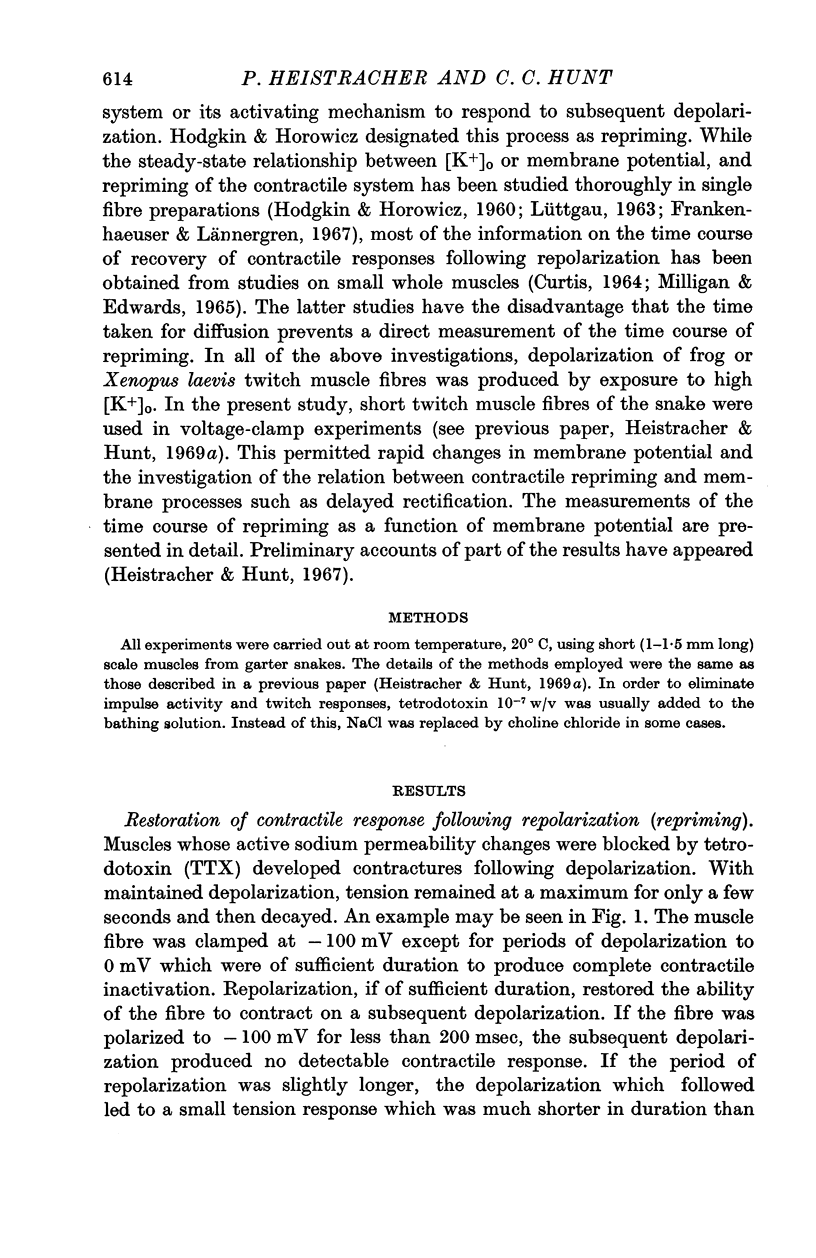
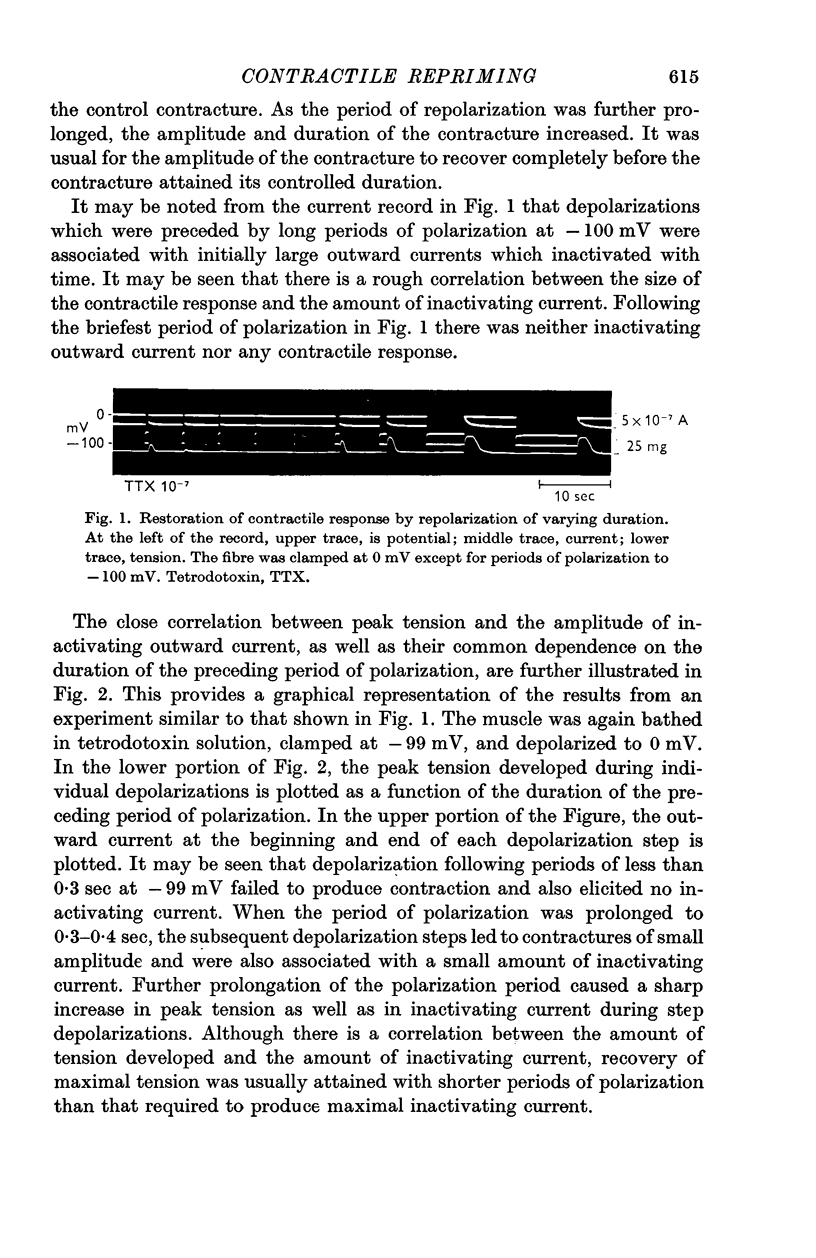
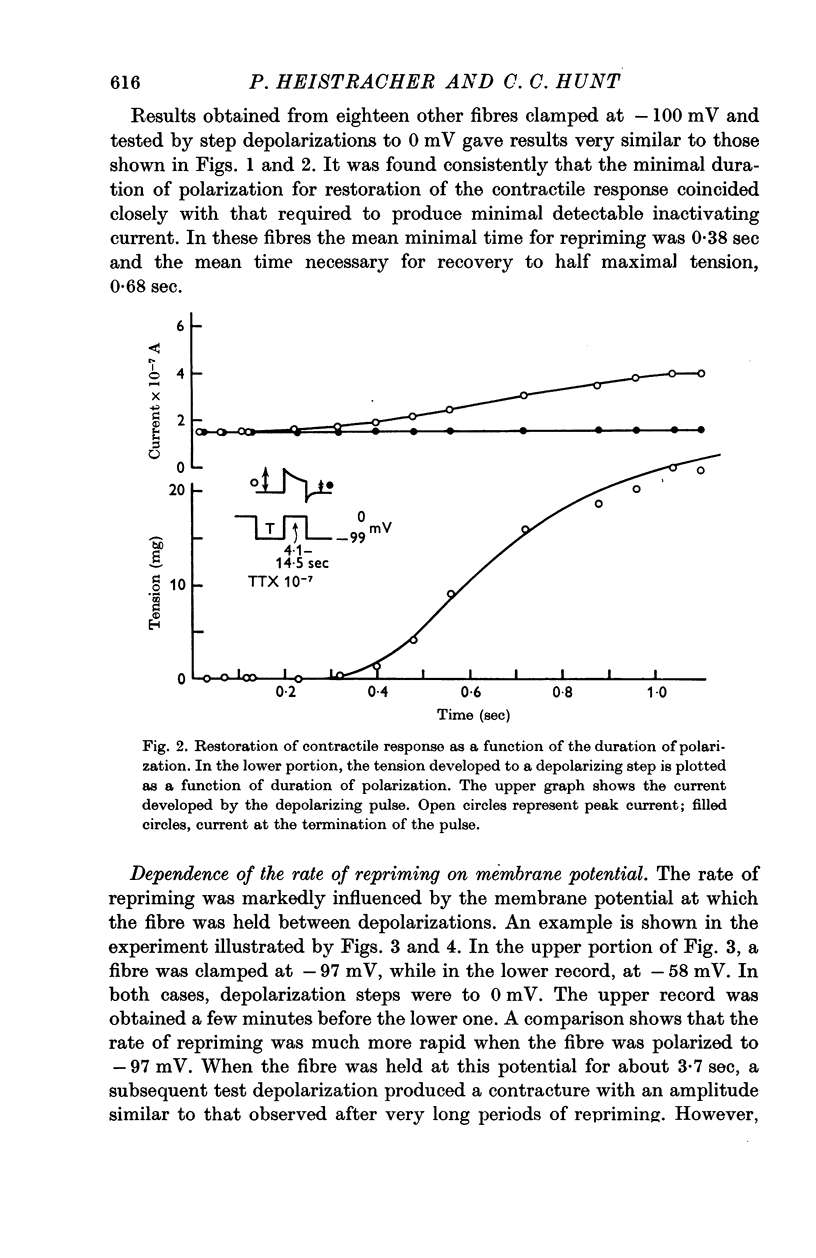
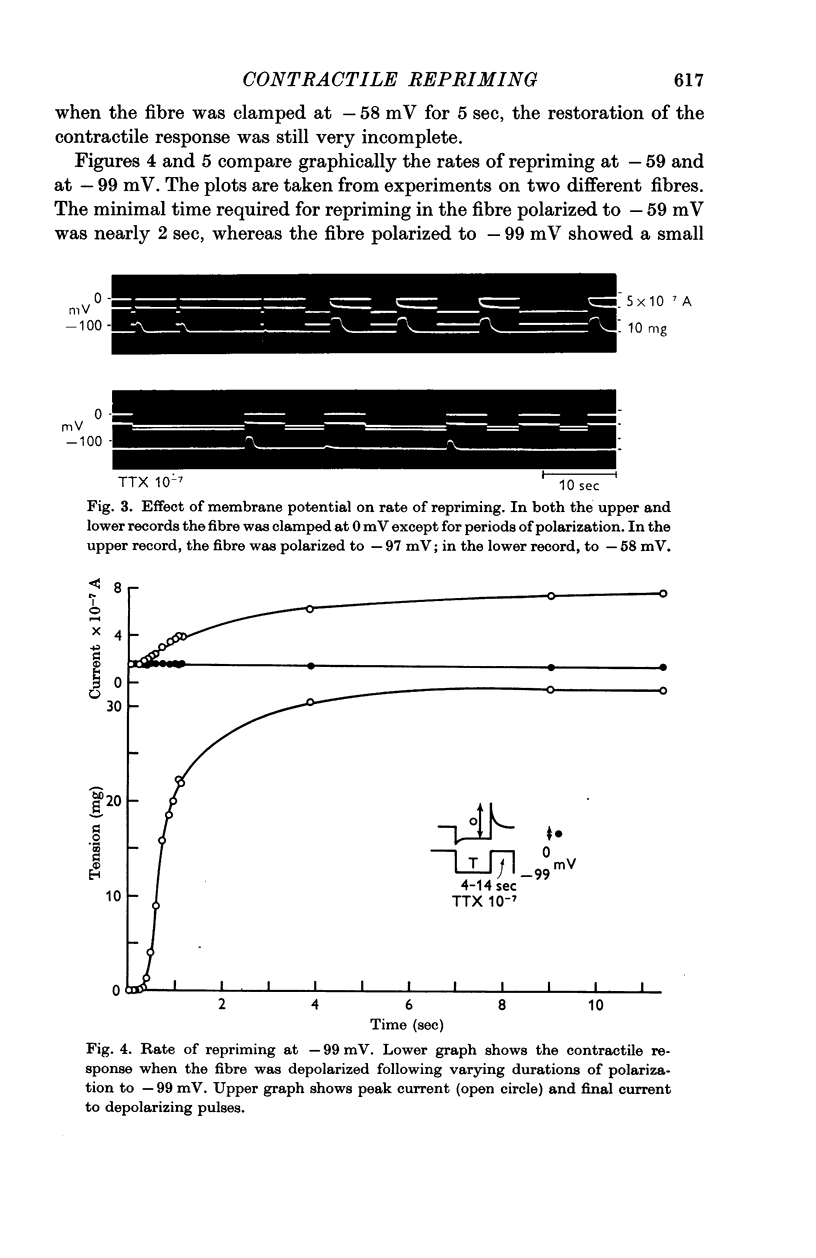
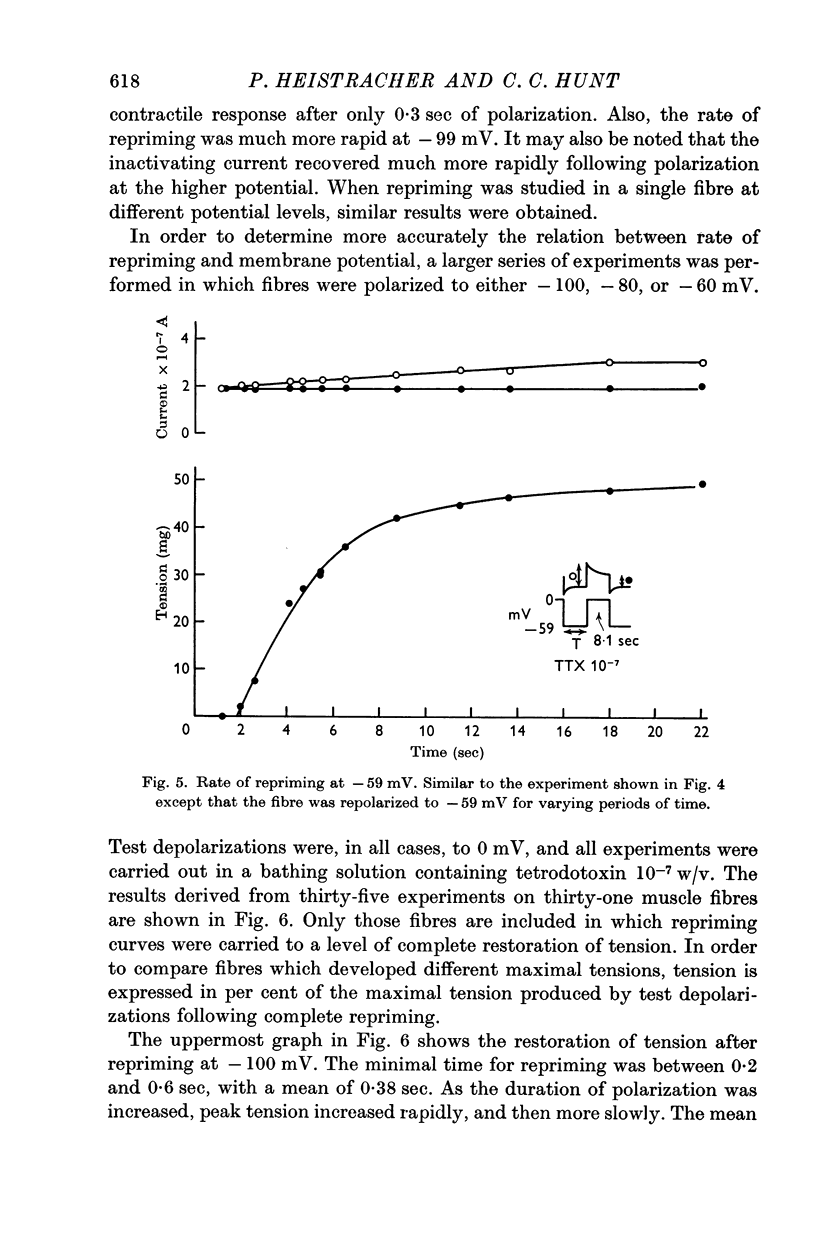

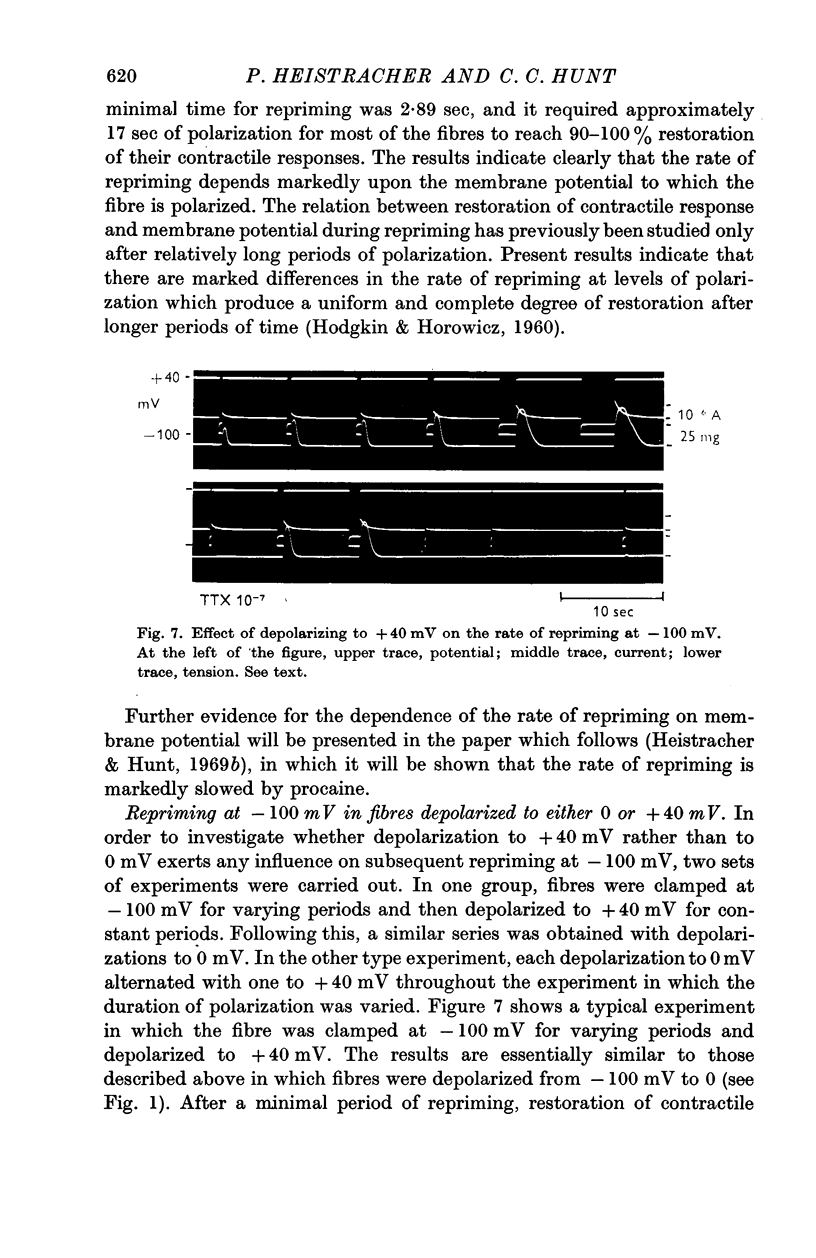
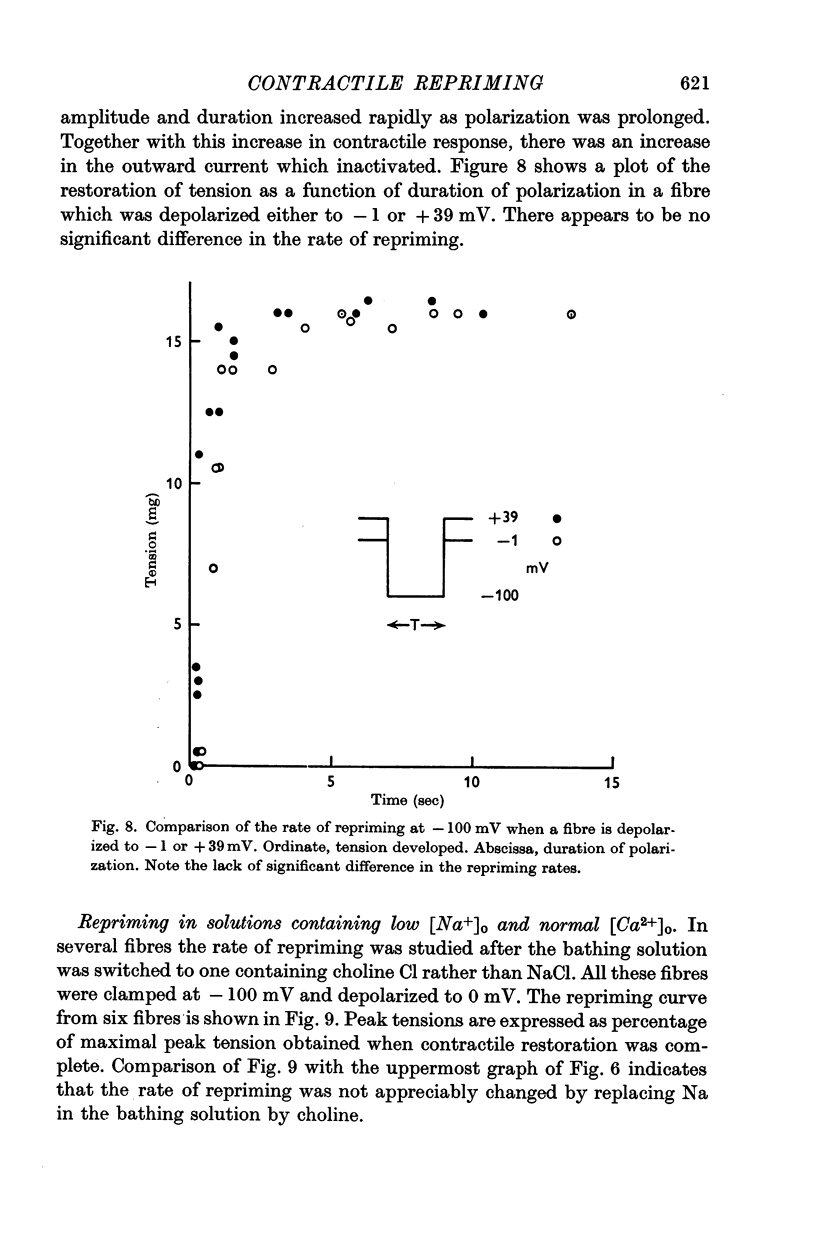
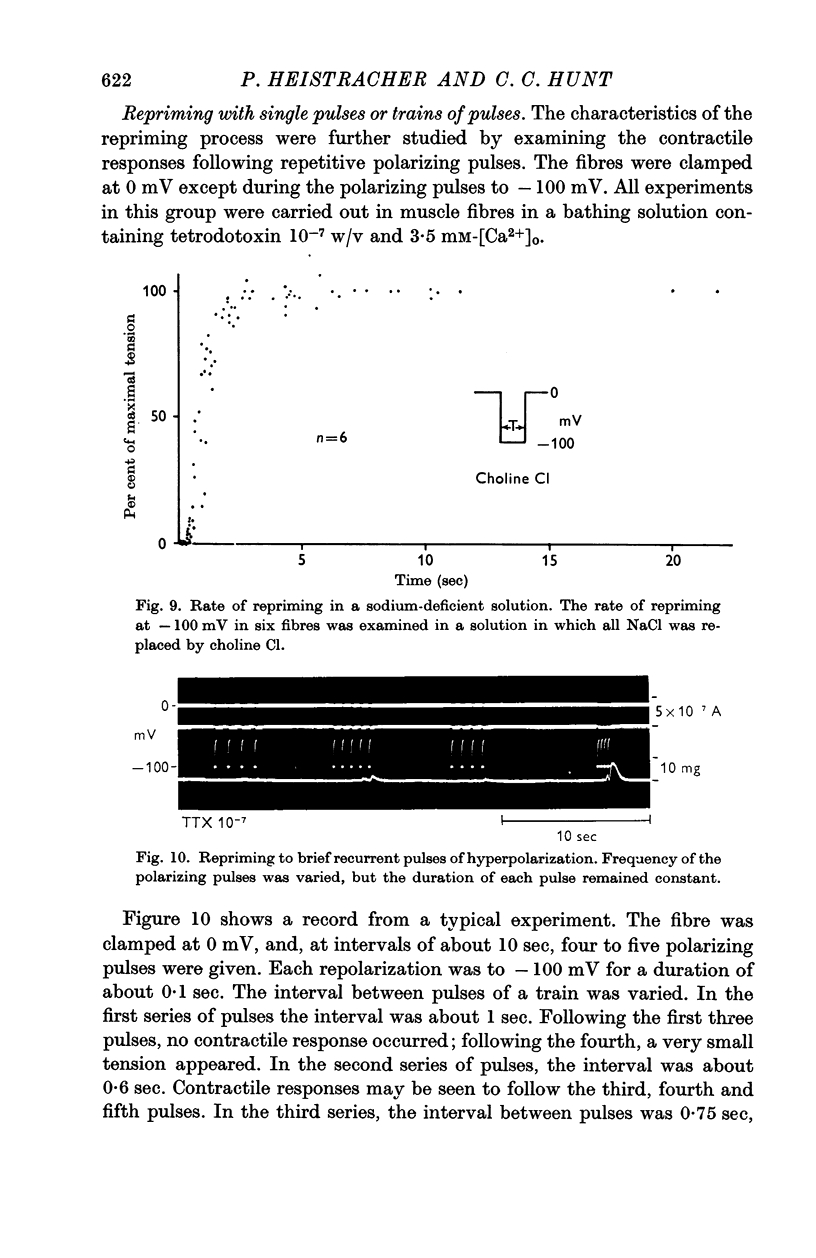
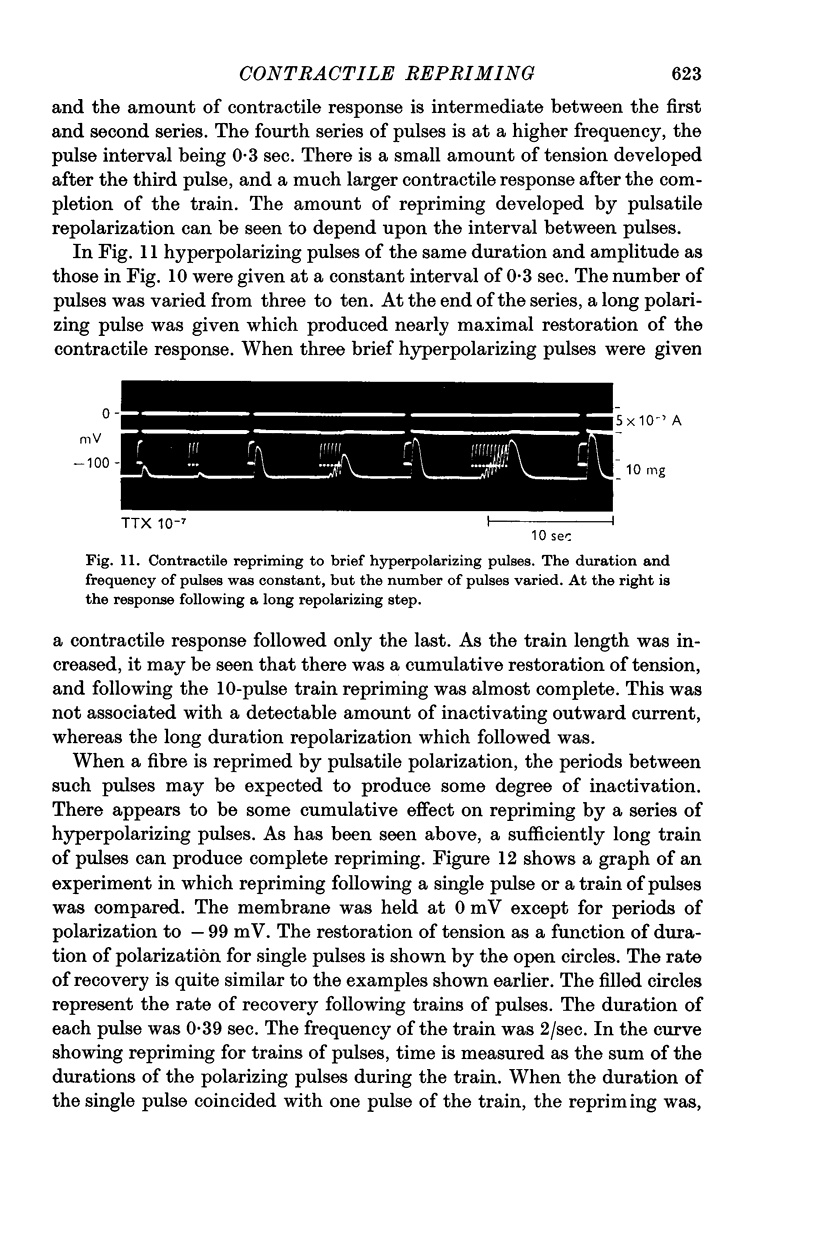
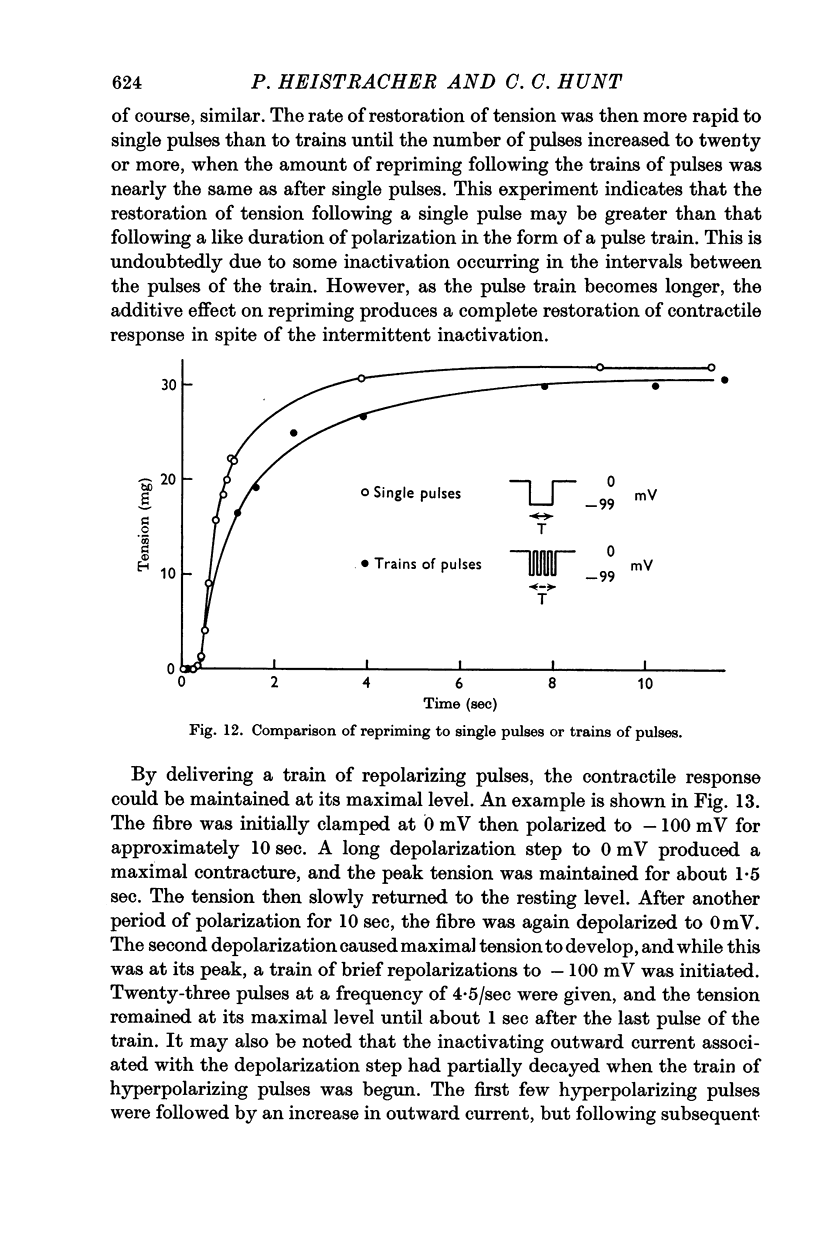
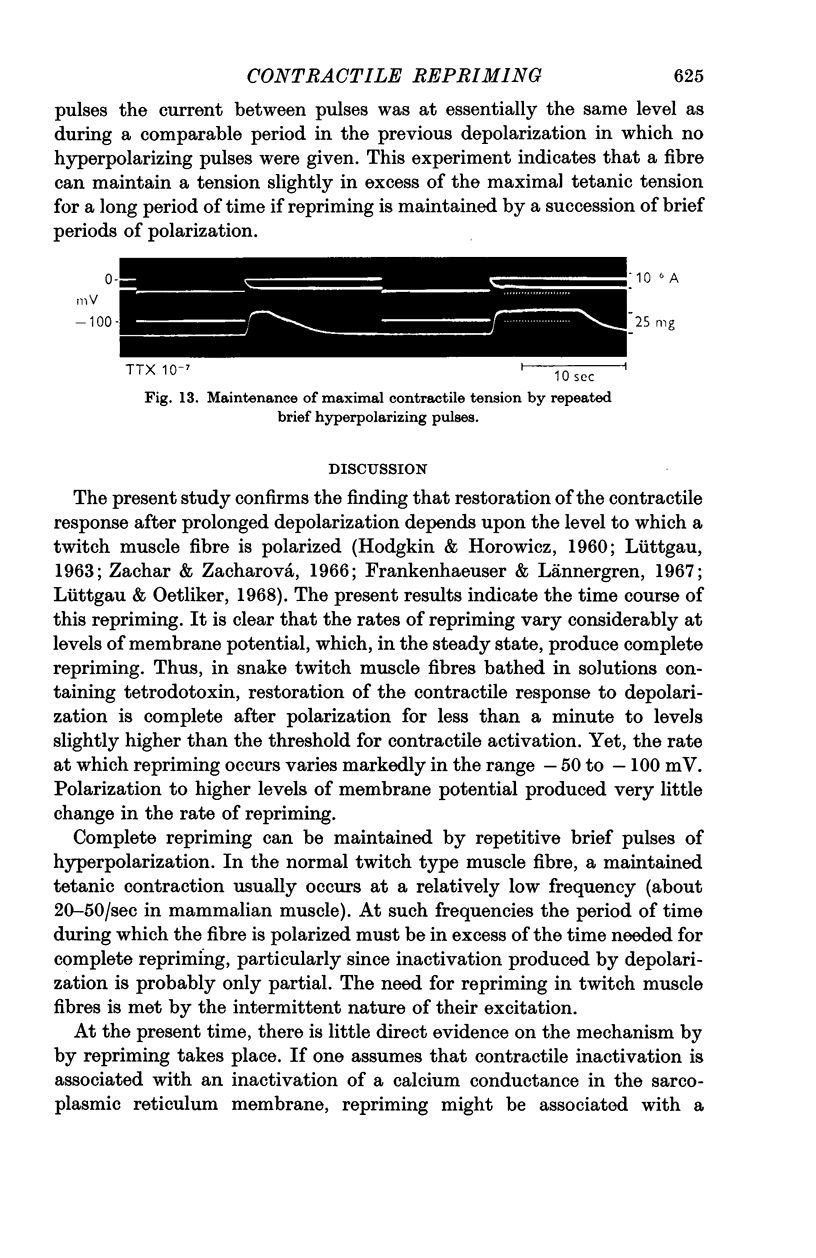
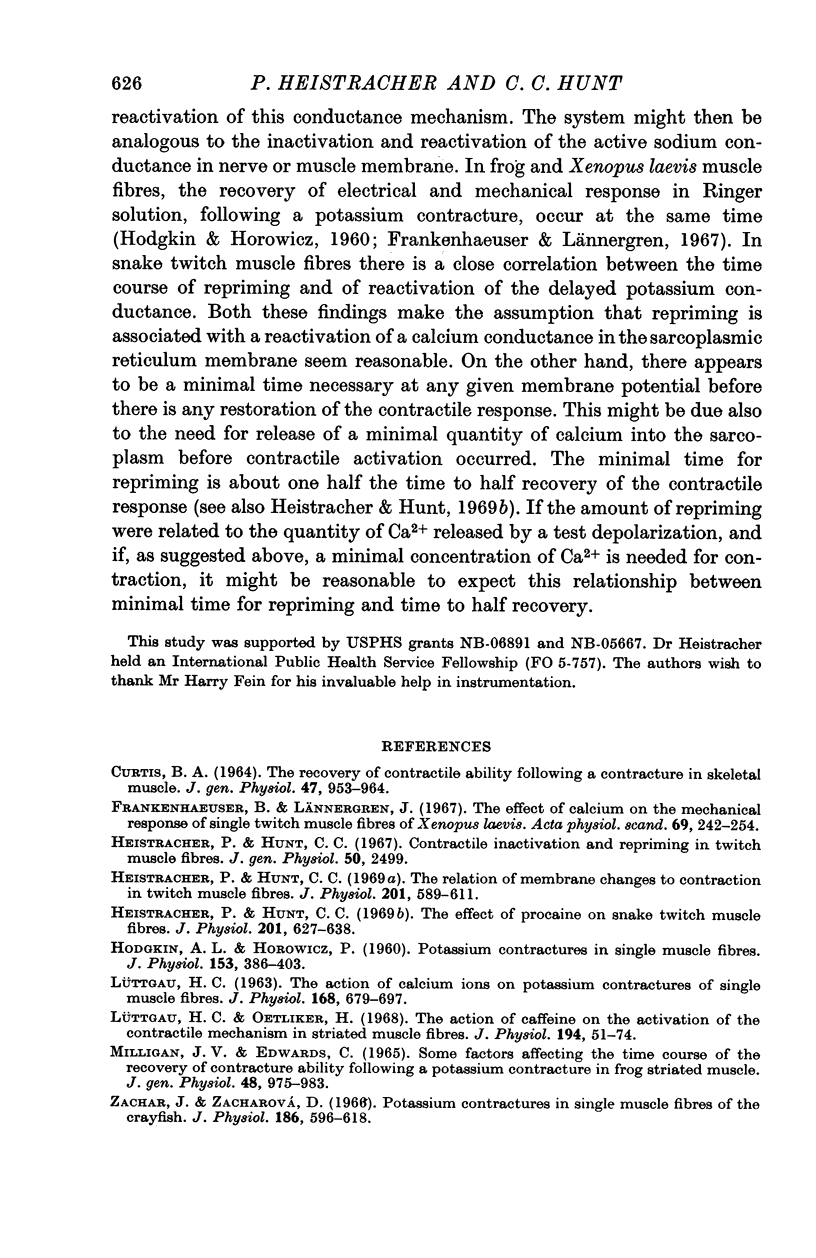
Selected References
These references are in PubMed. This may not be the complete list of references from this article.
- CURTIS B. A. THE RECOVERY OF CONTRACTILE ABILITY FOLLOWING A CONTRACTURE IN SKELETAL MUSCLE. J Gen Physiol. 1964 May;47:953–964. doi: 10.1085/jgp.47.5.953. [DOI] [PMC free article] [PubMed] [Google Scholar]
- Frankenhaeuser B., Lännergren J. The effect of calcium on the mechanical response of single twitch muscle fibres of Xenopus laevis. Acta Physiol Scand. 1967 Mar;69(3):242–254. doi: 10.1111/j.1748-1716.1967.tb03518.x. [DOI] [PubMed] [Google Scholar]
- HODGKIN A. L., HOROWICZ P. Potassium contractures in single muscle fibres. J Physiol. 1960 Sep;153:386–403. doi: 10.1113/jphysiol.1960.sp006541. [DOI] [PMC free article] [PubMed] [Google Scholar]
- Heistracher P., Hunt C. C. The effect of procaine on snake twitch muscle fibres. J Physiol. 1969 May;201(3):627–638. doi: 10.1113/jphysiol.1969.sp008776. [DOI] [PMC free article] [PubMed] [Google Scholar]
- Heistracher P., Hunt C. C. The relation of membrane changes ot contraction in twitch muscle fibres. J Physiol. 1969 May;201(3):589–611. doi: 10.1113/jphysiol.1969.sp008774. [DOI] [PMC free article] [PubMed] [Google Scholar]
- LUETTGAU H. C. THE ACTION OF CALCIUM IONS ON POTASSIUM CONTRACTURES OF SINGLE MUSCLE FIBRES. J Physiol. 1963 Oct;168:679–697. doi: 10.1113/jphysiol.1963.sp007215. [DOI] [PMC free article] [PubMed] [Google Scholar]
- Lüttgau H. C., Oetliker H. The action of caffeine on the activation of the contractile mechanism in straited muscle fibres. J Physiol. 1968 Jan;194(1):51–74. doi: 10.1113/jphysiol.1968.sp008394. [DOI] [PMC free article] [PubMed] [Google Scholar]
- Milligan J. V., Edwards C. Some factors affecting the time course of the recovery of contracture ability following a potassium contracture in frog striated muscle. J Gen Physiol. 1965 Jul;48(6):975–983. [PMC free article] [PubMed] [Google Scholar]
- Zachar J., Zacharová D. Potassium contractures in single muscle fibres of the crayfish. J Physiol. 1966 Oct;186(3):596–618. doi: 10.1113/jphysiol.1966.sp008058. [DOI] [PMC free article] [PubMed] [Google Scholar]


